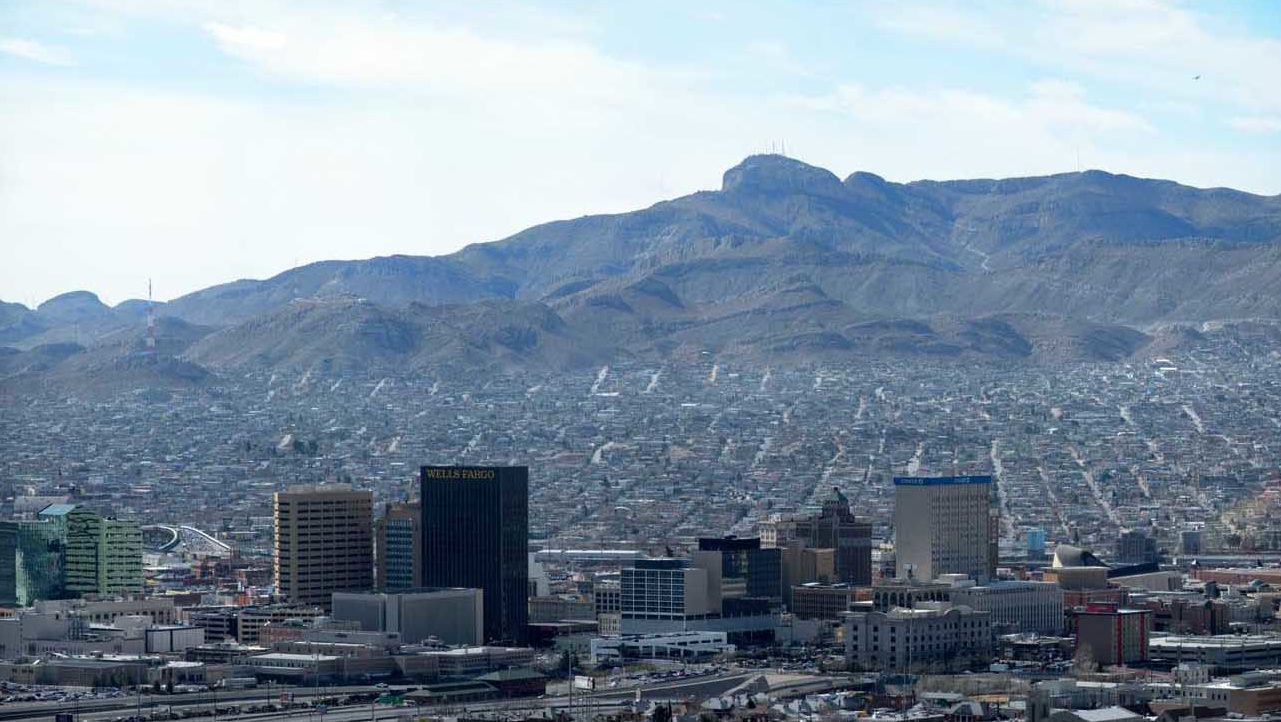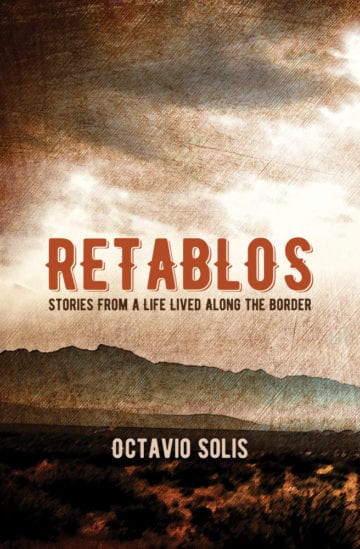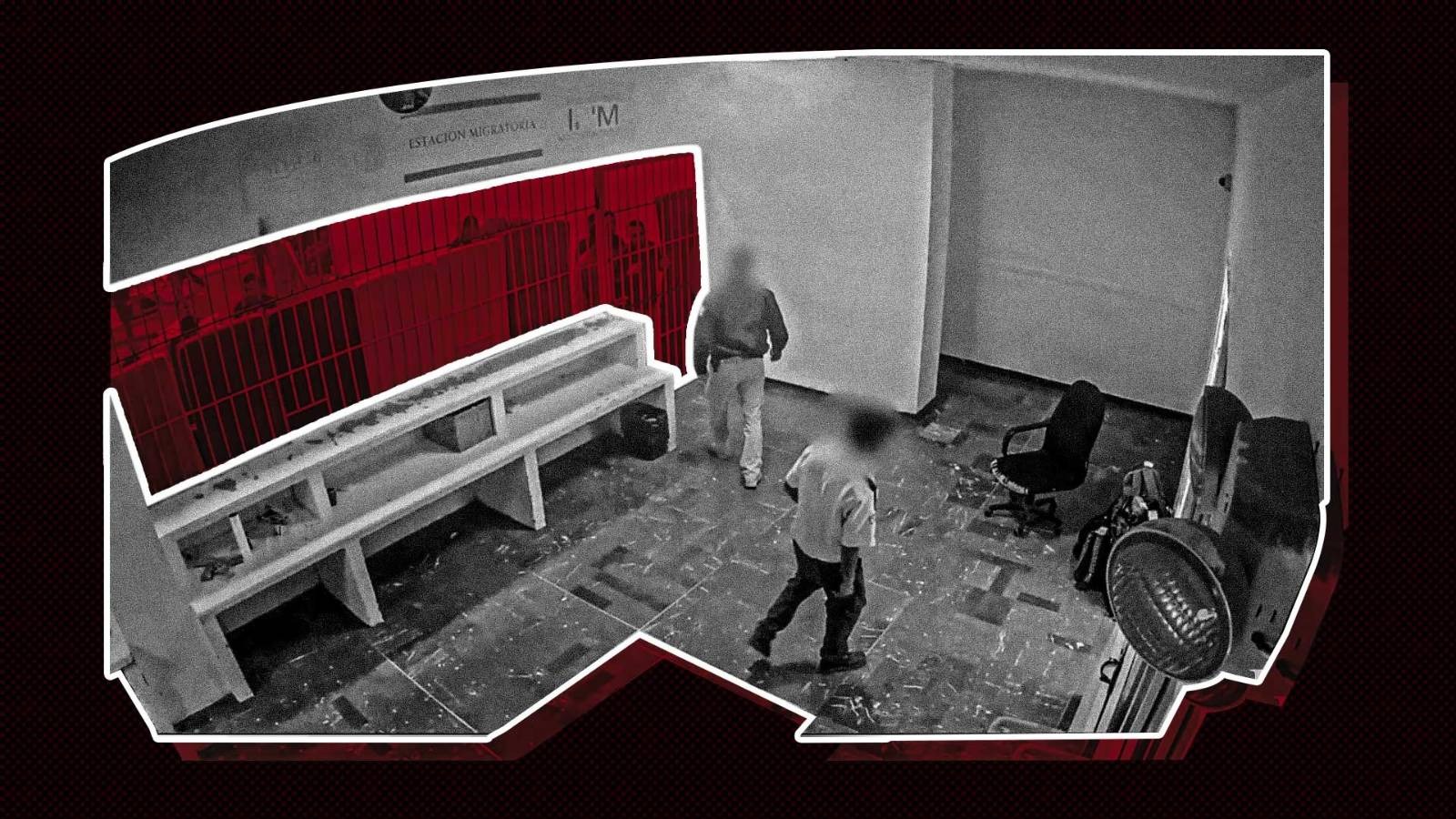
Octavio Solis’ ‘Retablos’ Recounts a ‘Beautiful, Messy’ Youth on the Border
Though its title evokes Mexican folk art, Retablos is closer in effect to that of French pointillism. Its small dabs of vivid color produce a brilliant cumulative effect.
Above: Downtown El Paso and Ciudad Juárez.
Describing his memories of childhood, 60-year-old Octavio Solis says that they come to him like “a set of retablos, votive images painted on old beaten tin, marked with the mystery of being.” In Mexican folk art, retablos are offerings of gratitude that usually depict Mary, a saint, or some other holy figure who saved someone from mortal danger. For Solis, who at 17 was more interested in girls than Jesus, the memories themselves express his gratitude for having survived the challenges of growing up within a strained working-class household in El Paso.
More than 25 widely produced plays, including Lydia, Santos & Santos and Man of the Flesh, have established him as one of the country’s leading Latino playwrights. But in his first book, Solis abjures the luxuries of plot and even drama. A collection of autobiographical flash fictions, Retablos consists of 50 linked stories. The author states that they are “true stories, but they’re filled with lies.” Barely two pages long, each attempts to capture a vivid moment in the life of a boy named Octavio coming of age in the 1960s across the border from Juárez. Taken together, they constitute a keenly observed bildungsroman that straddles the border not only between Chihuahua and Texas but also between Spanish and English, past and present, longing and memory.

By Octavio Solis
City Lights Books
$15.95; 158 pages
Born on the U.S. side of the border, the narrator, who like Solis has long since moved far away, explains: “I am an anchor baby.” The fact that his pregnant mother made it across to Texas provides legal legitimacy to the rest of the family, though La Migra is a constant, menacing presence, interrogating the boy who does not look or sound “American” to the Border Patrol agents cruising his neighborhood. His house is close to the Rio Grande, and desperate, fugitive figures flit in and out by night. The family makes monthly excursions to Juárez, and on the day they graduate from high school, Octavio and his pals pay a bungled visit to a Mexican brothel.
Solis recalls an iconic incident when enterprising drug dealers try smuggling kilos of marijuana in a Jeep, simply driving across a shallow stretch of the Rio Grande. The Jeep gets stuck in the middle of the river, and after the inept narcotraffickers flee the scene, law enforcement officials from Mexico and the United States compete to try to tow the vehicle to their side. It is a metaphor for the way young Octavio feels caught in a tug-of-war between two cultures. The Jeep ends up in Texas.
The boy is a quick learner at Hacienda Heights Elementary School, but he is not entirely able or willing to overcome the residual pull of Spanish against the English he is rapidly acquiring. He tries to show off his knowledge of geography by announcing in class his admiration for the “Pacific Ohkeean.” Spanish and Spanglish words remain embedded in his speech, and he later delights in summoning up local bits of slang then current among his fellow vatos – la lisa (the shirt), los calcos (the shoes), la ranfla (the bike). His jefito is a brooding, menacing father who works long, exhausting hours as a short-order cook in a taco joint. Octavio arrives at a truce with him during a temporary job waiting tables there.
There is nothing nostalgic about Solis’ recollections of “this hard life where the days pass like kidney stones and the nights are remembered for the sobbing and the cursing and the fists through the walls.” The sight of Blackie, the family’s German shepherd, crushed beneath the wheels of a pickup truck teaches the boy about death. Puberty dispels the close relationship he has with his sister, and his brother develops into a sworn enemy. He recalls the time he was caught shoplifting three jawbreakers from a neighborhood tienda and the shame that kept him from confessing to the priest on the day of his First Communion. The memory of sticking firecrackers in the mouths of frogs and watching them blow up still bothers him, as do his clumsy early romantic crushes. He recalls the embarrassment of fainting at a dance while gazing at a girl.

But there are also moments of transcendence. Cast as Peter Van Daan in a high school production of The Diary of Anne Frank, the future playwright and actor loses himself in the role. “The words go in my eyes and come out my mouth with all the heart I can summon and in that magical spell,” he writes, “the school and the impossible classloads and the gangs that chase me on the way home and the Border Patrol and the tensions of home and my personal anxieties about who the fuck I am and all the lived experience that make my town this unspectacular, sporadically dangerous place simply go away.”
Though its stories are much shorter, Solis’ project bears some resemblance to Tomás Rivera’s 1971 …y no se lo tragó la tierra (…And the Earth Did Not Devour Him), a pioneering work of autobiographical Chicano fiction that attempts, through linked stories, to convey the experiences of a boy growing up in a family of migrant farmworkers. Though its title evokes Mexican folk art, Retablos is closer in effect to that of French pointillism. As in the paintings of Georges Seurat, its small dabs of vivid color produce a brilliant cumulative effect.
Solis recalls how once, during the family’s monthly shopping expedition to Juárez, where prices are much lower than in El Paso, he stands in awe watching a glassblower perform what seems like magic, as wondrous forms emerge from the fire he holds. The spectacle, he concludes, wielding his own incandescent art, provides “a glimpse at how this beautiful messy world, blazed when it was first created, might blaze again someday.”



